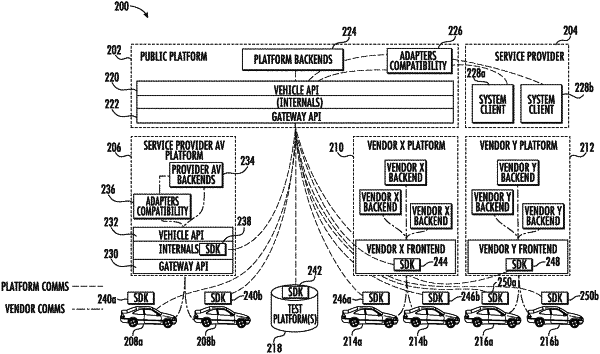| CPC H04L 63/0823 (2013.01) [G05D 1/0022 (2013.01); G05D 1/0027 (2013.01); G05D 1/0055 (2013.01); H04L 9/0825 (2013.01); H04W 4/48 (2018.02); H04L 2209/84 (2013.01)] | 17 Claims |

|
1. A communication infrastructure, comprising:
a vehicle integration platform comprising at least one processor programmed to facilitate message communication among a plurality of clients; and
a security integration system comprising at least one processor programmed to perform operations comprising:
receiving a client certificate forwarded to the vehicle integration platform, wherein the client certificate is associated with a client of the plurality of clients, the client being an autonomous vehicle associated with a first autonomous vehicle vendor platform;
generating a certificate signing request associated with the client certificate based in part on an identity of the client;
obtaining an operational certificate for the client based in part on the certificate signing request, the operational certificate for the client describing a vendor identity associated with the client, and vendor specific security information associated with the vendor identity, the vendor identity indicating the first autonomous vehicle vendor platform;
signing an instruction message for the client based on the operational certificate and the vendor specific security information associated with the vendor identity; and
causing the client to execute a transportation service using a vehicle autonomy system of the autonomous vehicle based on the signed instruction message.
|